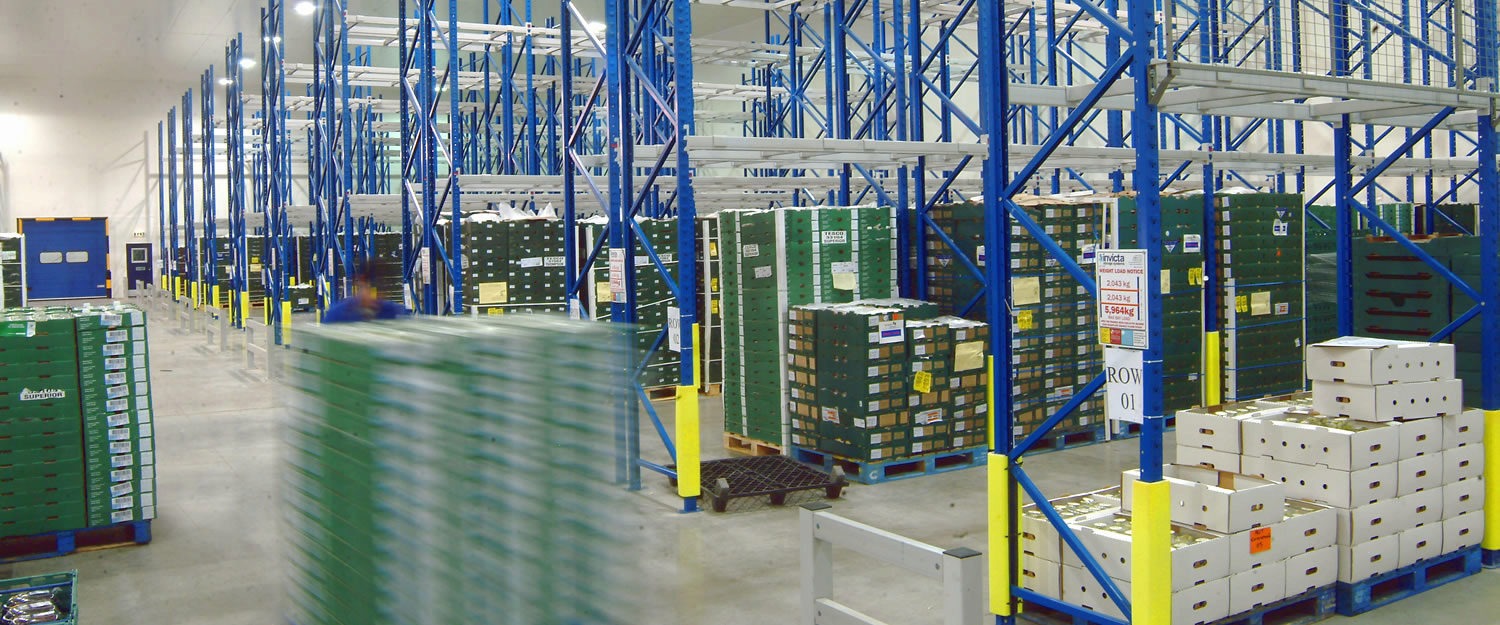For your information
You are being redirected to one of our divisional subsites which contains more detailed information on the required division. To navigate back to the main Invicta Group site, please click the link found in the footer at the bottom of the page.
What is a smart warehouse, and how can it benefit your business?
5th January 2023
Quick Quote
Contact Mick Coyne
To get a quotation or arrange a free site survey - Call Mick Coyne on
-
 UK
UK
Current location:
Quick Quote
Contact Mick Coyne
-
 UK
UK
Current location:
The last couple of years have seen a digital transformation across business sectors. A multitude of challenges have forced businesses to adapt, adopting new ways of communicating, planning, and completing work. While some businesses have fallen by the wayside, many of those that survived are better for the experience. Corporate giants have become more agile, and small businesses have started to step into the 21st century.
The role played by warehousing and logistics during the pandemic was so important that there was no such opportunity for reform. Now that the dust has settled slightly, and the sector is less chaotic, now may be an ideal time to consider reforms. Chief amongst these is the prospect of the smart warehouse: a long-touted concept that is becoming more and more attractive.
What is a smart warehouse?
You’ve likely heard of other ‘smart’ devices, as many of us use them everyday. Every phone is now a smartphone, while smart speakers, smart cars and even smart appliances are central to many people’s lives. What these devices all share is how they use information to provide us with choices, and automate certain tasks. Rather than being manually controlled, these devices can use data from sensors or the internet to perform tasks, whether that’s issuing alerts or updates, queuing our favourite playlists, or reminding us about meetings.
A smart warehouse operates on similar principles. Much as cars and phones use sensors to interpret the world around us, smart warehouses use sensors to record everything that happens within the warehouse. Small, networked sensors placed around a warehouse monitor things like stock levels, ambient temperatures, and occupancy. When connected to a warehouse management system (WMS), this data can be aggregated and interpreted in order to automate certain tasks, and provide new insights for managers and operatives.
These sensors are part of what’s known as the Internet of Things, or IoT. The IoT refers to the billions of devices around the world that connect to the internet or a local network in order to share data. This is the same principle behind a fridge that automatically orders you milk when you run out, using an app to turn your heating on while you commute home, or using a remote security system such as Ring to see who’s at the door.
A smart warehouse can use sensors to turn off lighting when it’s not in use, ventilate a space, maintain an optimum temperature, and even automatically monitor security systems, alerting you to any issues. While many new warehouses are built as smart warehouses from the ground up, existing warehouses can also be modified to make them smart, allowing any business to reap the rewards of this developing technology.
What are the benefits of a smart warehouse?
There are a number of immediate operational benefits to a smart warehouse. The main one is saving time by automating tasks that would otherwise be performed manually. Things like accurately tracking inventory, automating orders, and improving warehouse navigation all reduce the time it takes to complete tasks, and reduce the burden of tedious and repetitive jobs. This allows you to focus on more human-centric tasks, helping you to save money on labour and keep employees more engaged.
Smart warehouses can also play a substantial role in warehouse safety. Sensors and displays can help to control the flow of traffic through a warehouse, preventing congestion or collisions. Sensors are also ideal for monitoring equipment and machinery, providing alerts when a device is due for inspection or maintenance, and detecting faults before they can cause a risk to operatives. Automating strenuous tasks through things like robotics and autonomous vehicles can also reduce the physical strain of warehouse work, helping to prevent injuries and time off.
Smart warehouses also tend to be much more energy efficient. By using sensors to more accurately detect the temperature within a warehouse, the HVAC systems can be more precisely tuned to heat or cool the space only as necessary. Automatic doors can prevent heat from being transferred, while smart lighting – where lights are dimmed or turned off when people are not in the vicinity – also help to save energy. This is not only good for your sustainability credentials, but will also save money in the long run.
The data collected by sensors isn’t just useful for making momentary decisions, either. A modern WMS will store all of this data, and allow you to cross reference different historic datasets. This information can help you to build a picture of how your warehouse operates, and pick up on patterns, such as noticing how efficiency drops at a certain time of day, or how traffic builds up in one area. Analysing this data can empower better decision making, and allow you to make more systemic changes to the efficiency of your warehouse.
How to implement smart warehouse tech
Most technology we consider as ‘smart warehouse tech’ isn’t actually smart. The sensors that detect things like temperature or motion don’t do anything by themselves, in the same way our eyes don’t create the images we see. Instead, they provide data to a central repository, a brain that processes the information and uses it to make decisions. In the case of a warehouse, this is usually the warehouse management system, or WMS.
A WMS is designed to perform and automate a multitude of tasks, not all of which are relevant to smart technology. When combined with sensors and other inputs such as portable scanners, however, it can play a central role in a smart warehouse. A modern WMS can automate processes such as environmental control, detecting when the temperature becomes too low or high and adjusting it within predefined parameters; or providing stock alerts and even ordering new stock when bays are empty.
While existing warehouses can be modified to accommodate smart technology, it is often best to implement it as part of a holistic warehouse redesign. This way, the warehouse can be updated to make use of (or prepare for) a range of modern technologies. High density narrow aisle or wide aisle racking can maximise your storage space while also catering to new forklift designs, or to robots and autonomous vehicles, which may require specific aisle widths, turning radiuses or guide rails. Things like traffic flow can also be improved, while the space created by more efficient racking can be reassigned for other tasks, or more racking.
–
We’re still at the cusp of smart warehouse technology, and it will be some decades before all warehouses are converted to largely autonomous models. The technology does exist today, however, and to a level of quality and accessibility that makes it a viable option for even small and medium sized companies.
Transitioning to a smart warehouse now could give you a leg up on the competition, and prepare you for a fully autonomous future. To learn more about implementing racking in a smart warehouse, get in touch with us today.
Accreditations & Affiliations







Start your project
Tell us about your project. Please complete this form. One of our sales team will come back to you with more details. If you prefer, you can drop us an email.




Share/Like this page